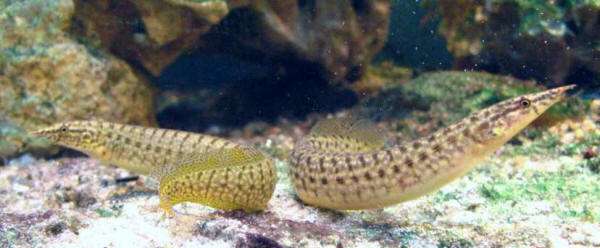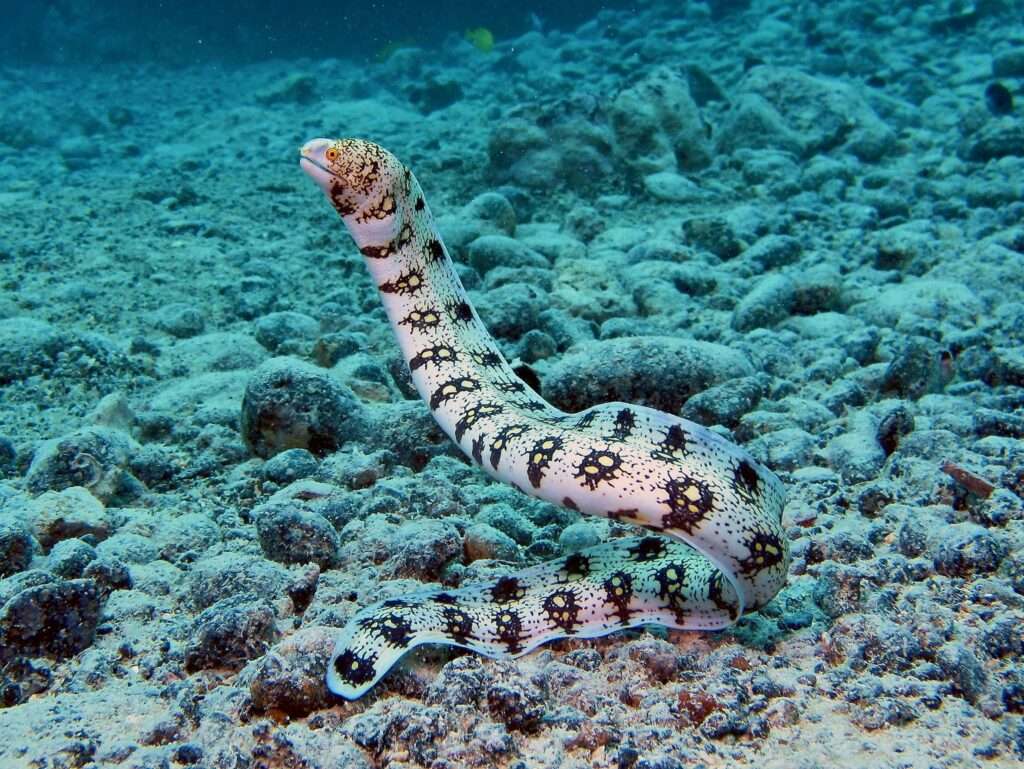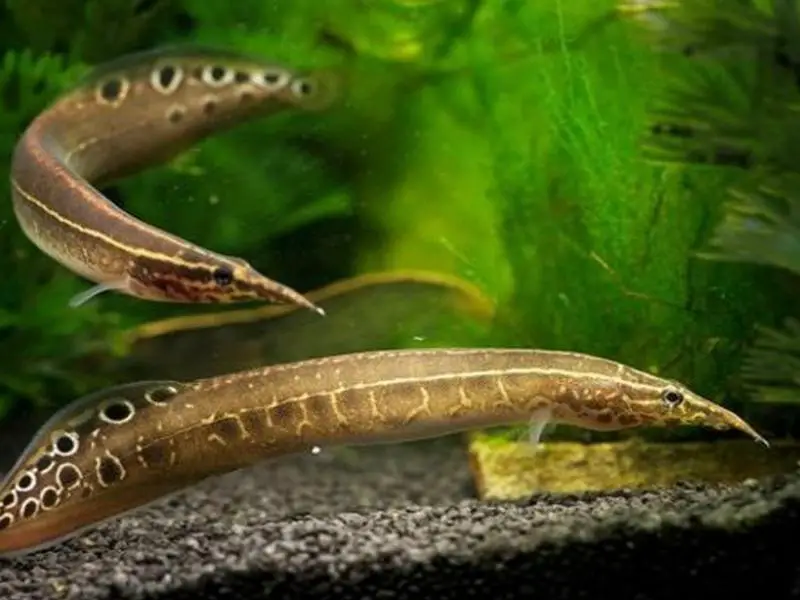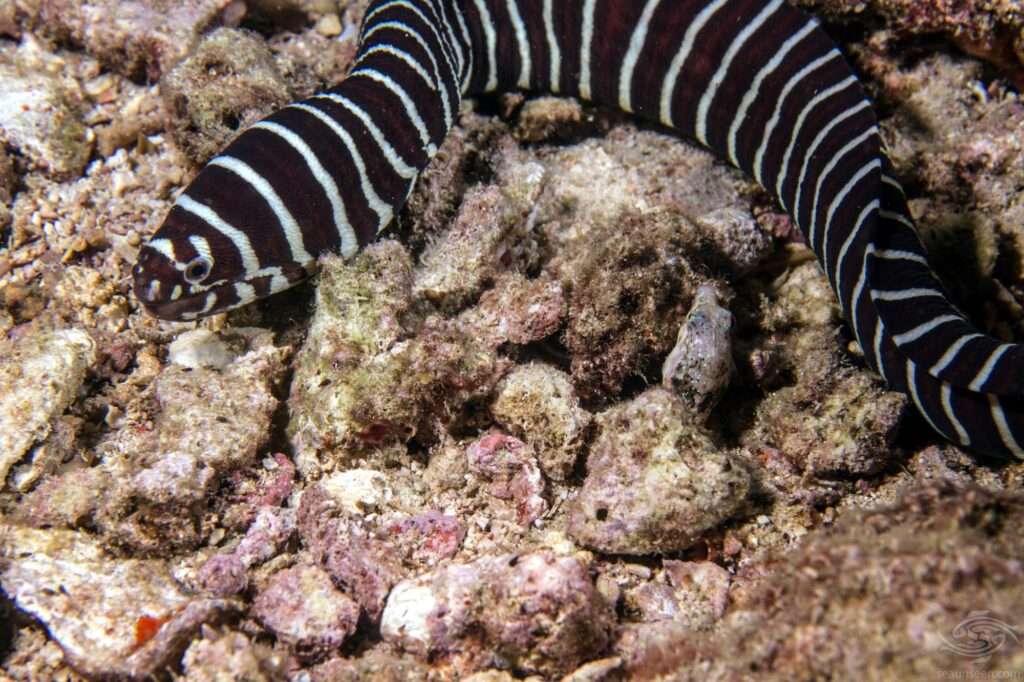
A great illustration of a Spiny Eel from the Mastacembelidae Family is the Ocellated Spiny Eel Mastacembelus vanderwaali. This eel’s distinctive color pattern and intriguing activity, like those of the majority of spiny eels, make it fascinating. The background color of this fish ranges from dark tan to light brown. Blotches and narrow vertical stripes that form a broken line down the length of its body are its most distinctive features. The African Spiny Eel is another name for it that is frequently used. All members of the spiny eel family have eel-like body forms, while not being thought of as actual eels. A large snout and an extended body characterize this African spiny eel. It is a spiny eel that grows to a length of just around 12 inches (30 cm) in the wild. However, they rarely grow to this size in aquariums; instead, they typically reach a length of approximately 6 inches (15 cm).
This little fish, an eel, is rather lovely. Even though it is a shy fish when initially acquired, it is highly resilient once established. It gets along well in a group tank but needs places to hide when it wants to withdraw. As long as its tank mates are roughly the same size, it gets along well with them. However, it is advisable to keep spiny eels alone because they frequently engage in fighting among members of their own species. Spiny eels gradually get more secure as they get used to their surroundings. Eventually, some may even eat off their keepers’ hands.
Habitat
Skelton first described the Ocellated Spiny Eel Mastacembelus vanderwaali in 1976. They can be found in Africa in the Zambezi and Okavango Rivers. The African Spiny Eel is another name for this species. They live in the swiftly flowing waters of rivers and streams with sand or pebbled bottoms and typically thick vegetation. During the dry season, they also move into floodplains, lakes, and canals. They are nocturnal and spend the day half buried in the substrate before emerging at night to feed on aquatic animals like worms and insect larvae.
Traits
The Half-banded Spiny Eel has an extended body and a pointed snout. The very tiny caudal fin is reached by the extension of the dorsal and anal fins. These fish can get as long as over 6 inches (15.1 cm). Spiny eels live between 8 and 18 years. A dark tan to light brown color makes up the background. A shattered line of black spots or small vertical stripes runs the length of its body in the center. From the fish’s mouth’s tip to its tail, this pattern is present. Along with a thin spotted line above, there is more spotting below this core indication.
Keeping as Pet

Foods
Carnivores are ocellated spiny eels. In the wild, they eat worms, bug larvae, and other benthic creatures at night. They favor a diet of live, fresh-frozen items like brine shrimp, black worms, earthworms, or bloodworms, as do all spiny eels. Although some can be made to eat freeze-dried brine shrimp or bloodworms, this is not a guarantee. Make sure their tank mates are too big to fit in their mouths because they will also consume little fish.
When originally brought to a new environment, these eels are extremely wary and frequently perish from malnutrition. Feeding these fish is best done at night, and food should always reach the bottom. The eel should not be housed alongside other aggressively feeding bottom-dwelling fish until it has grown accustomed to its surroundings.
Face Difficulty to Keeping in Aquarium
Eels are typically recommended for more experienced aquarists rather than fish keepers who are just starting out. This eel can be quite sensitive to change and frequently needs some time to overcome its timidity. Getting them to eat during the first two weeks can be really challenging. They do need water that is exceptionally pure. They have very thin scales covering their bodies, making them vulnerable to parasites and fungi, as well as extremely sensitive to treatments. Copper-based treatments should be avoided because these fish do not respond well to them. These eels have a lengthy lifespan if properly cared for.
Table





